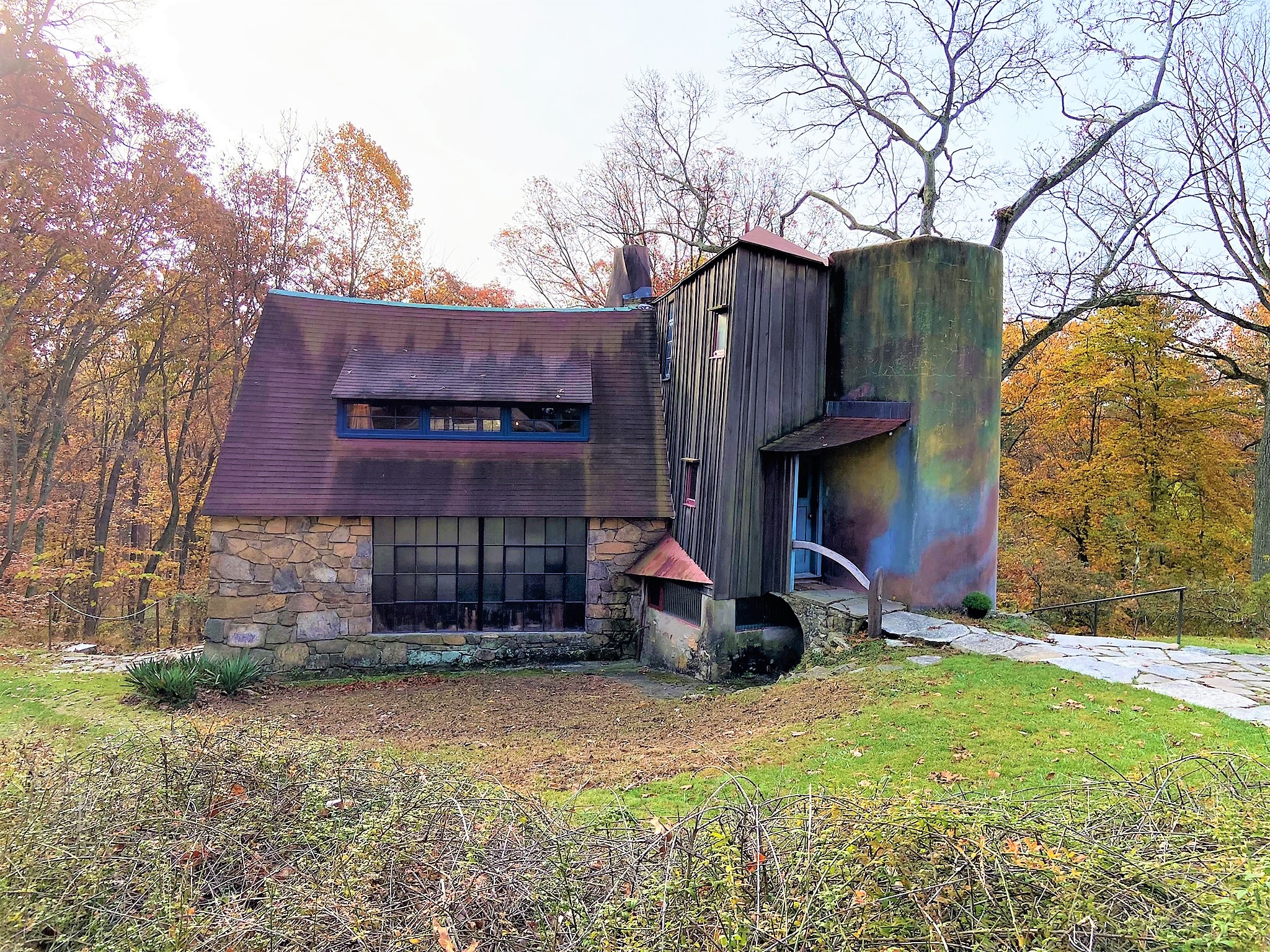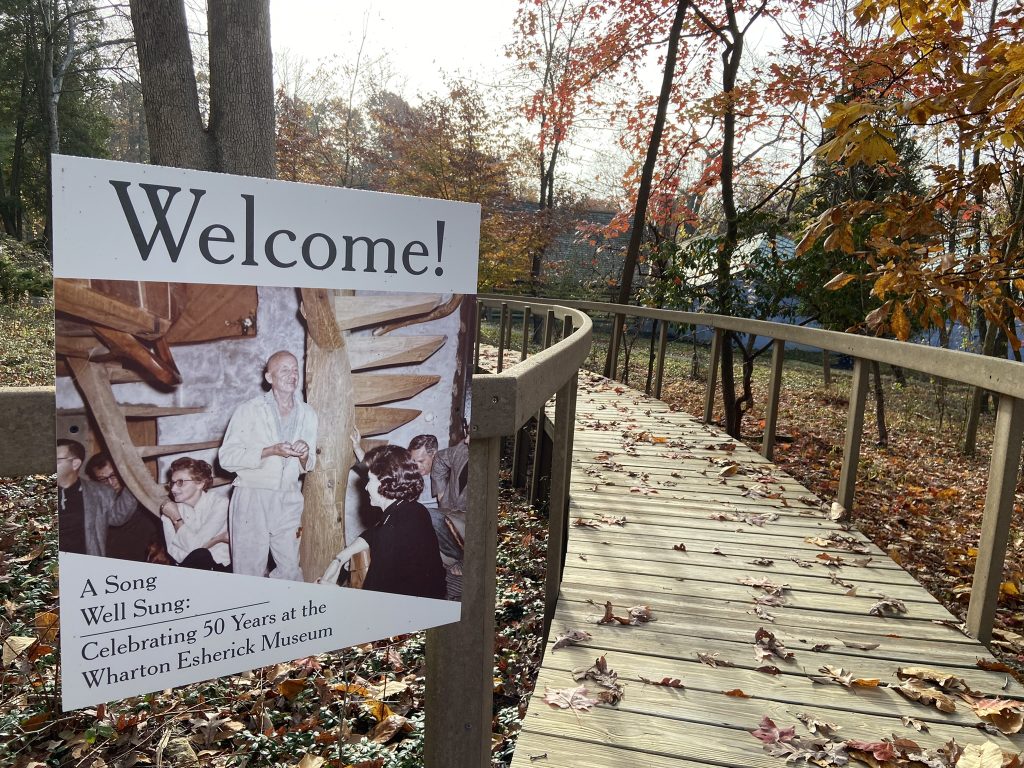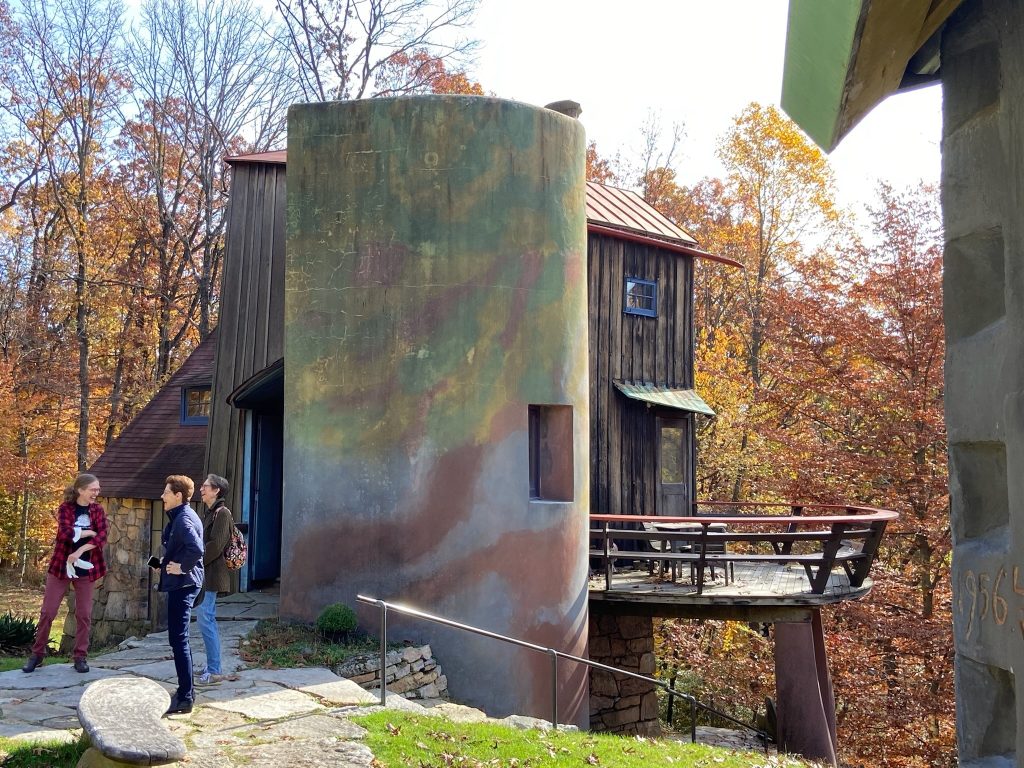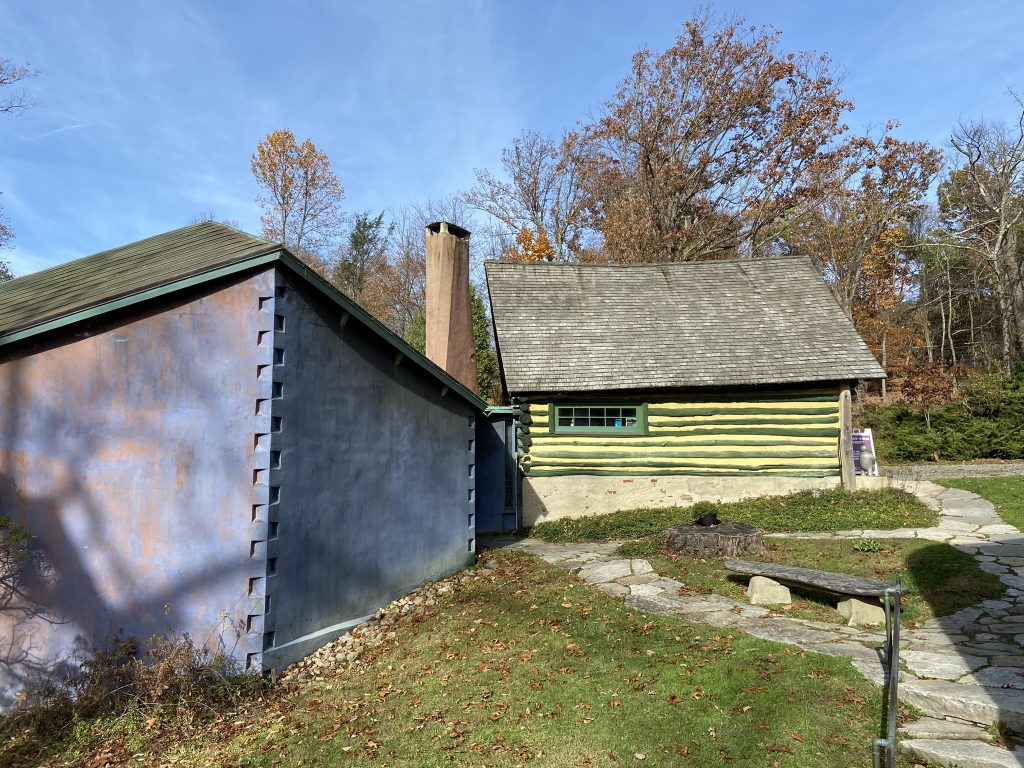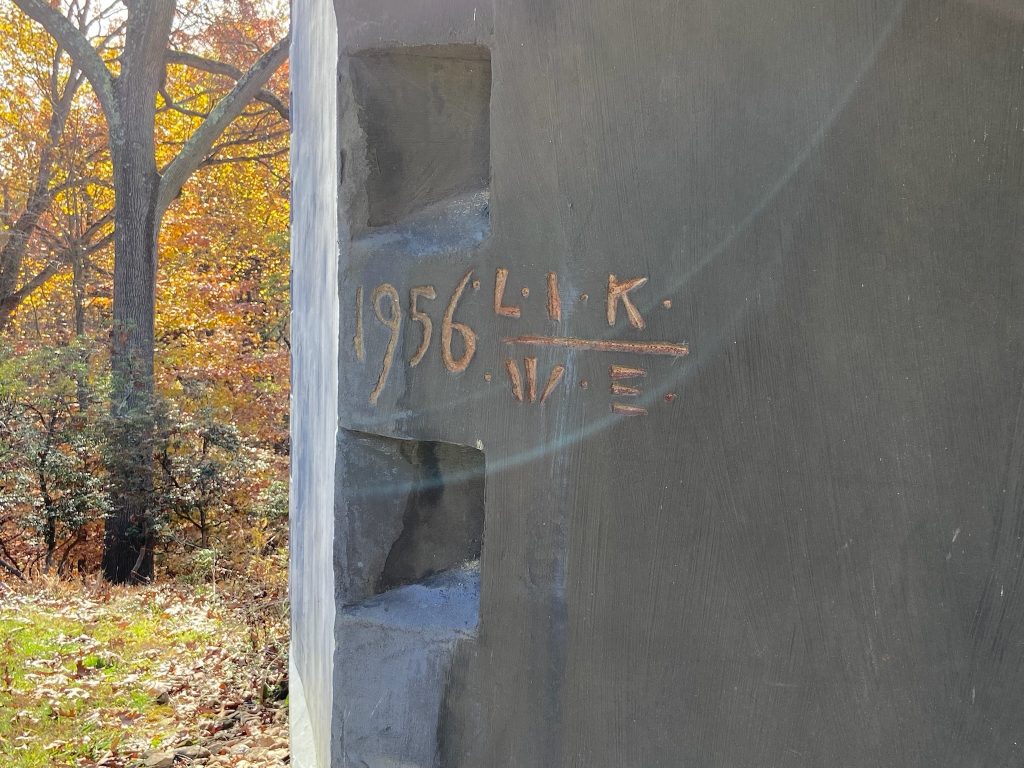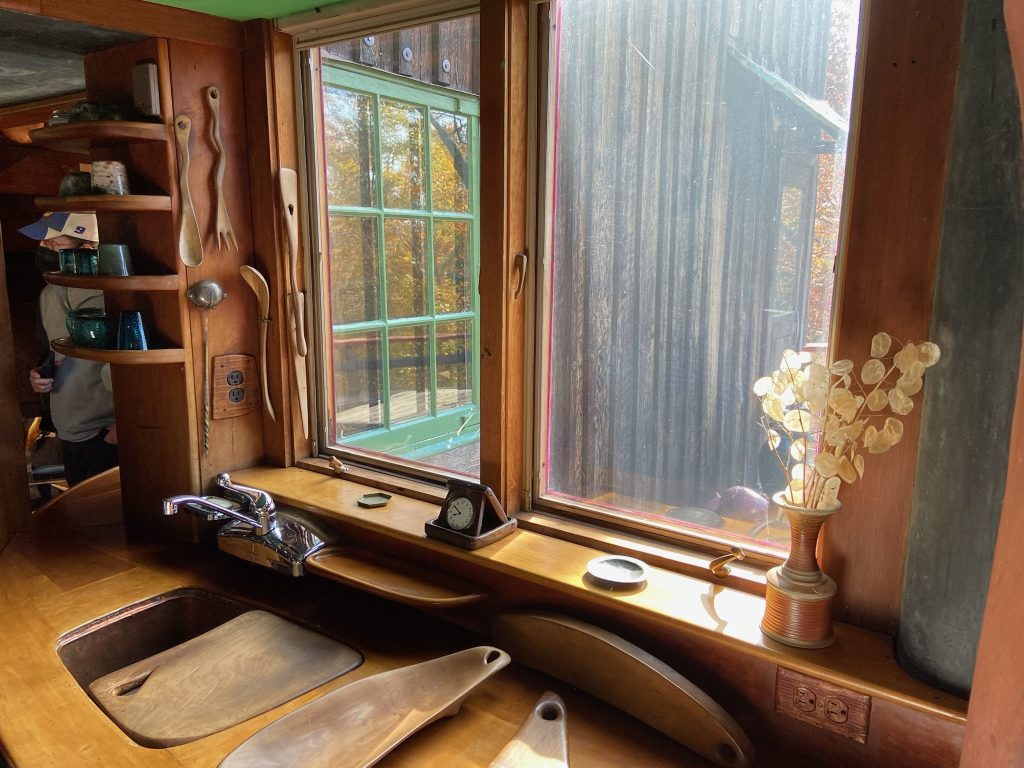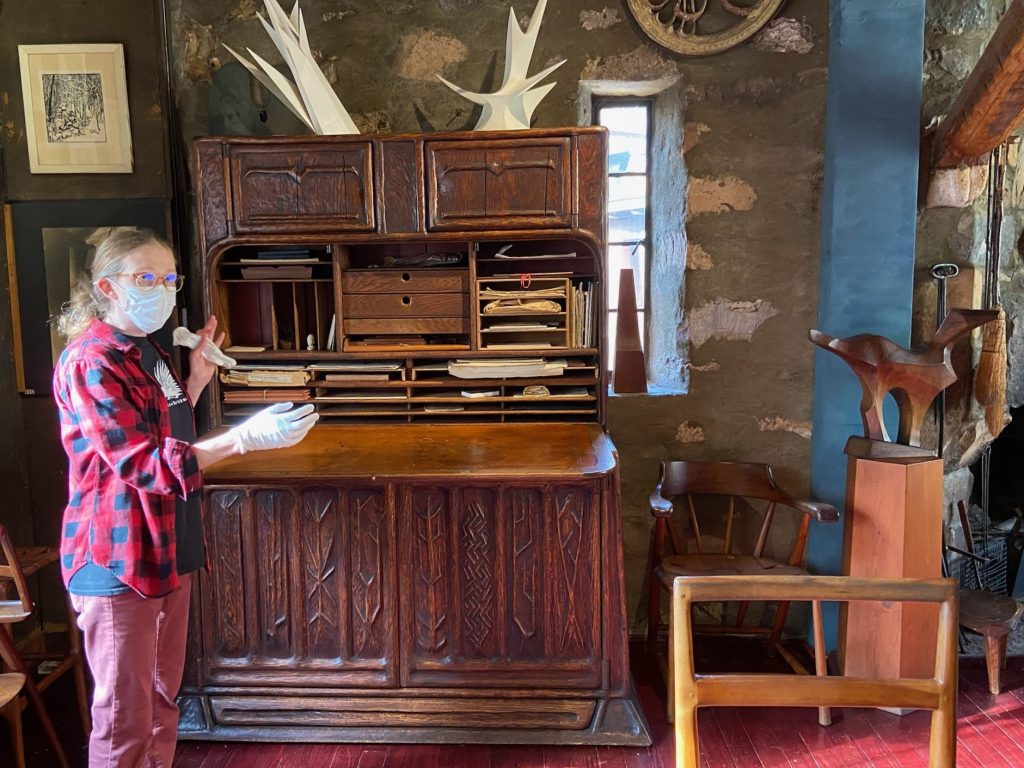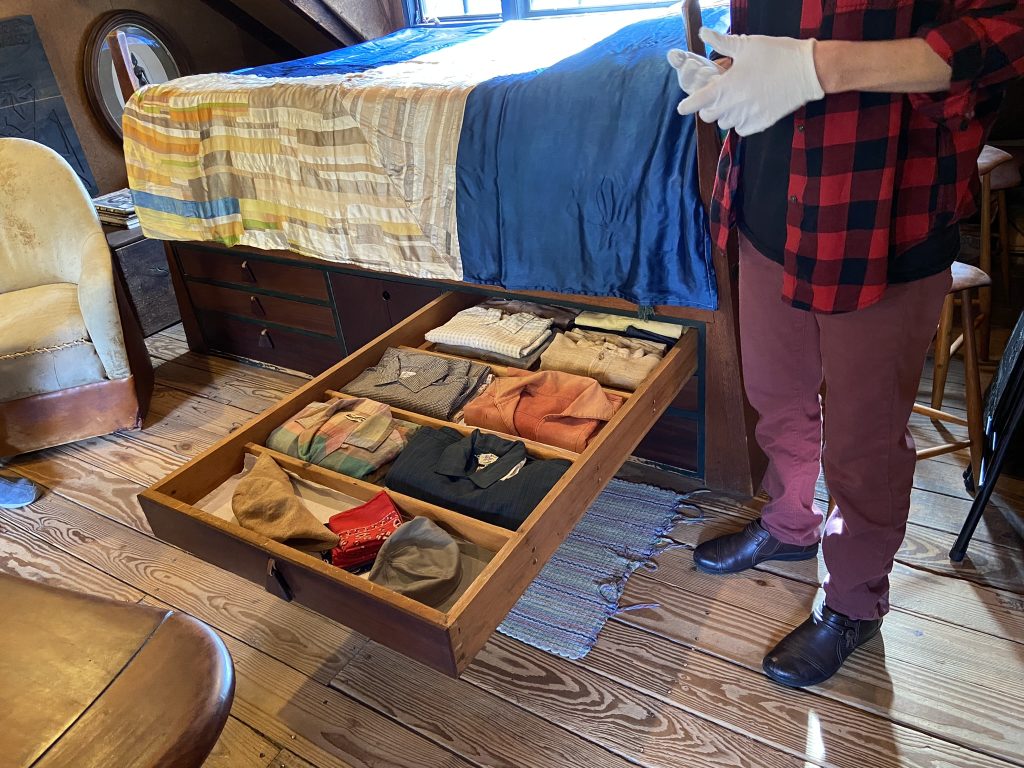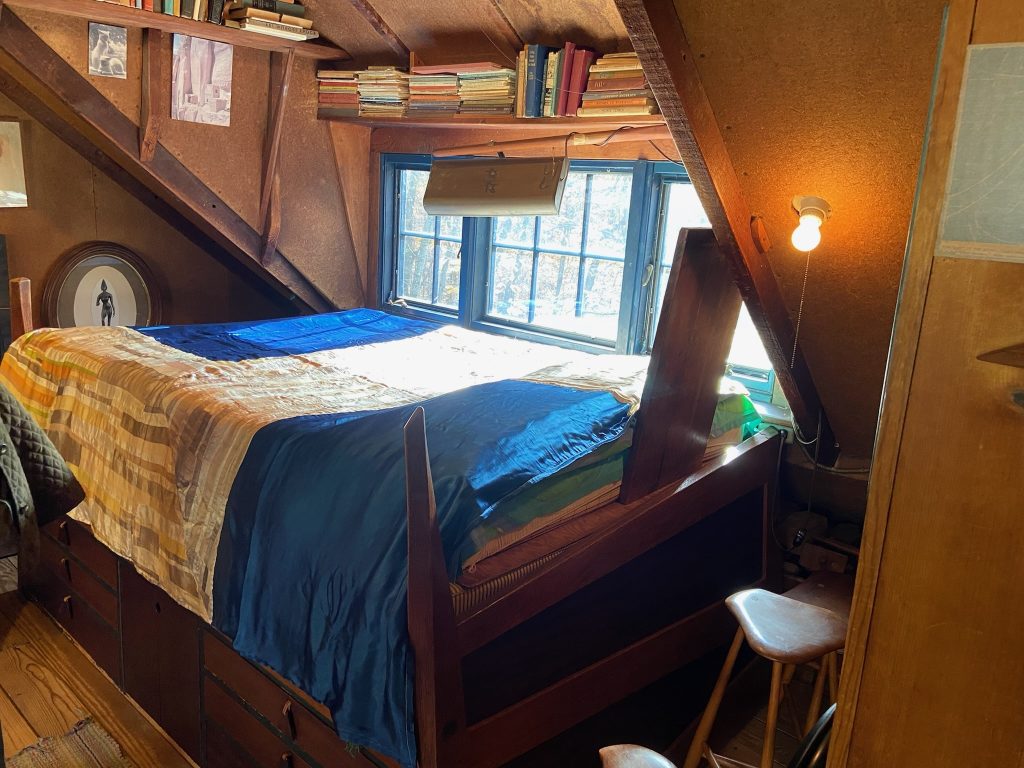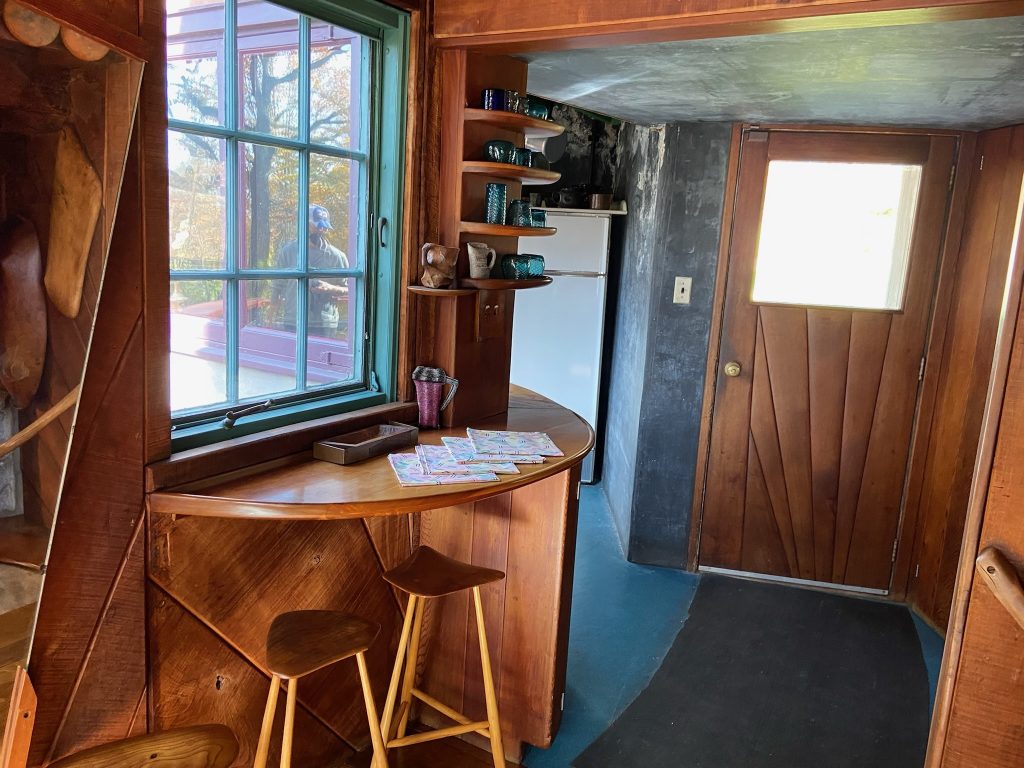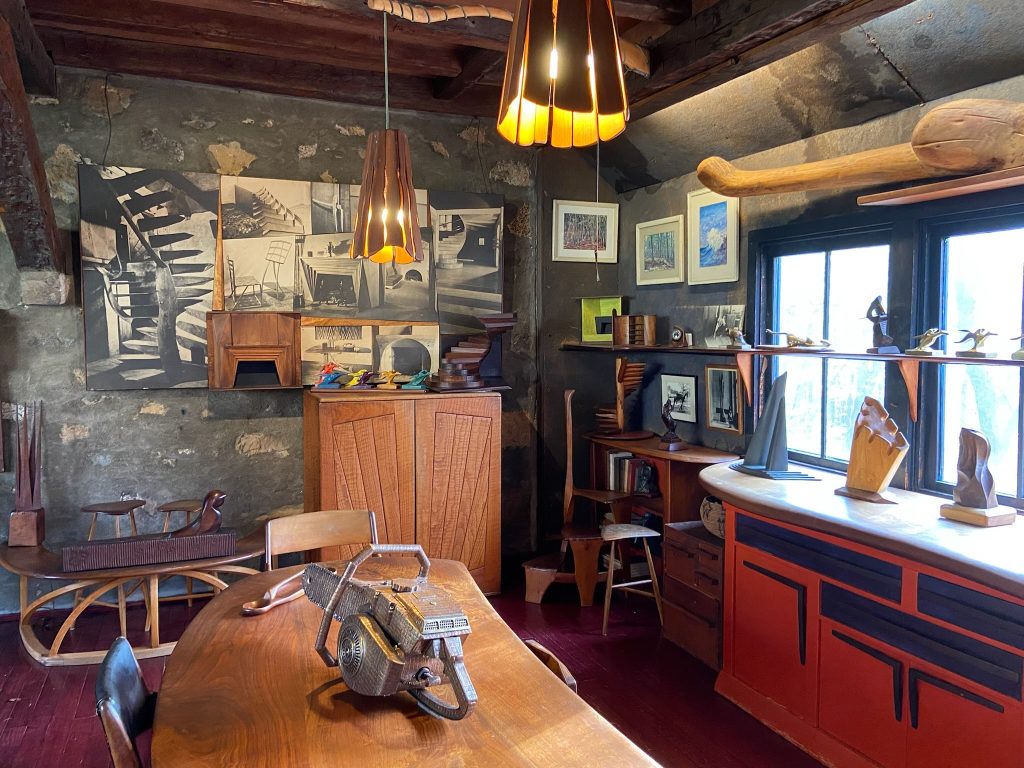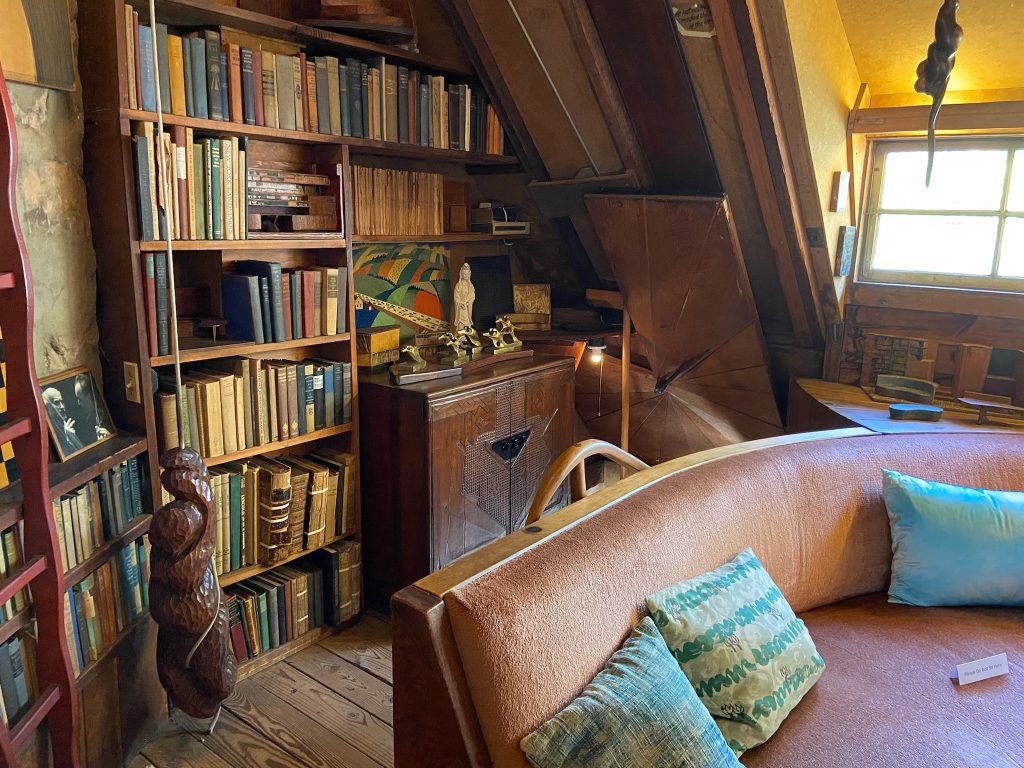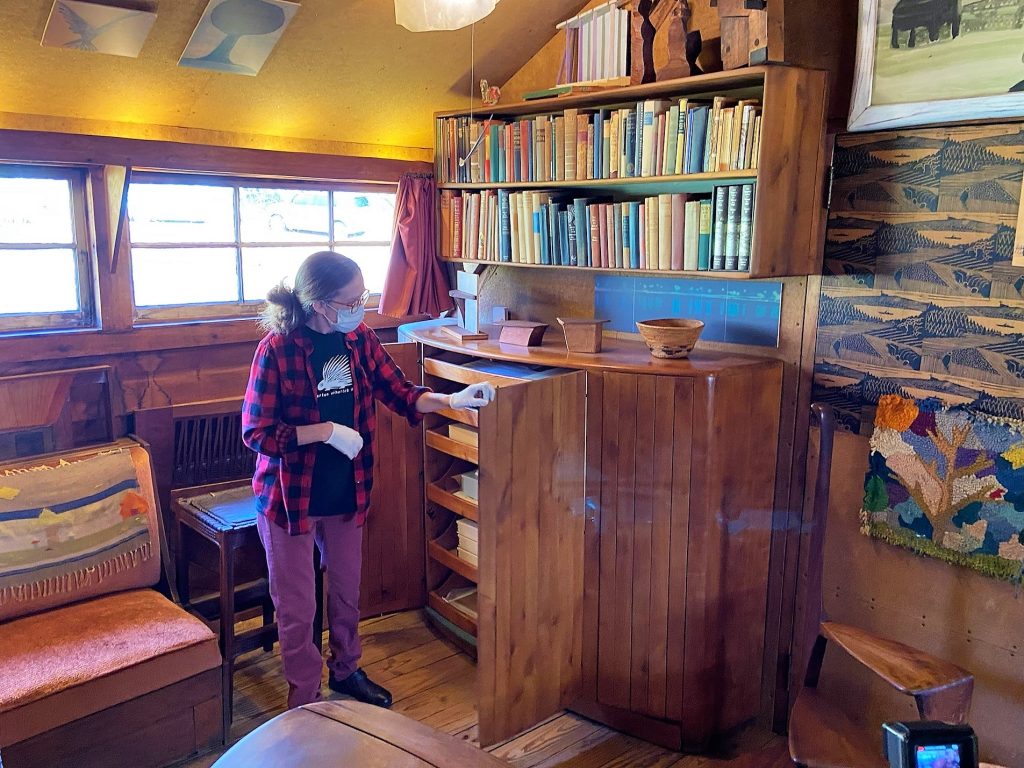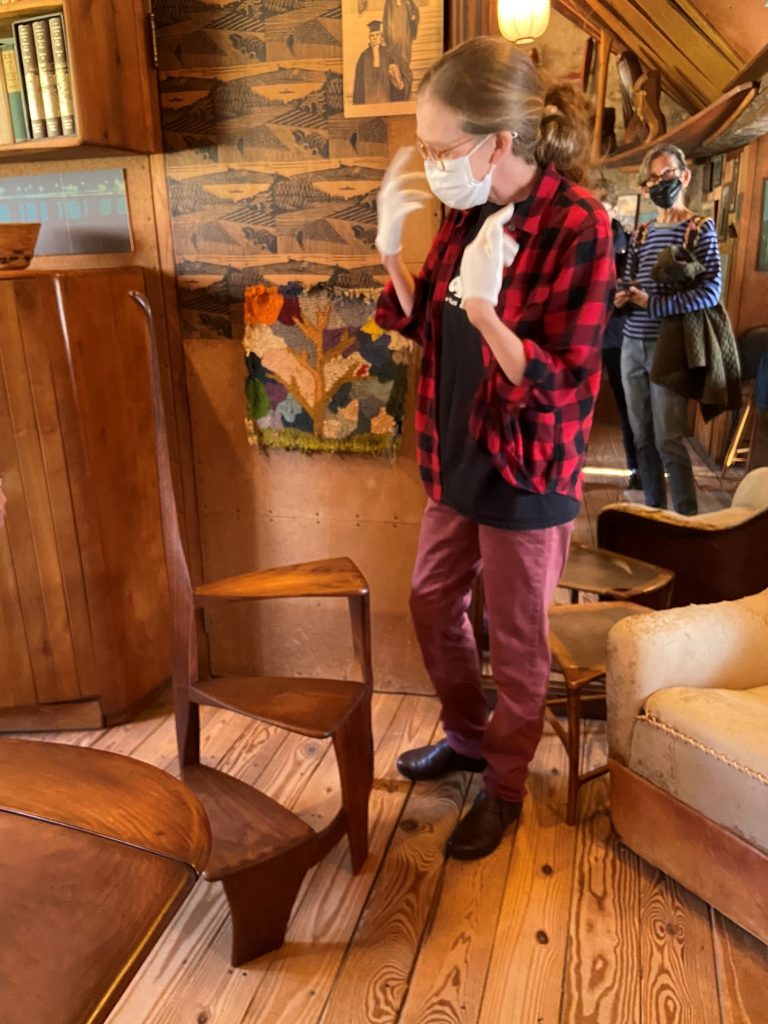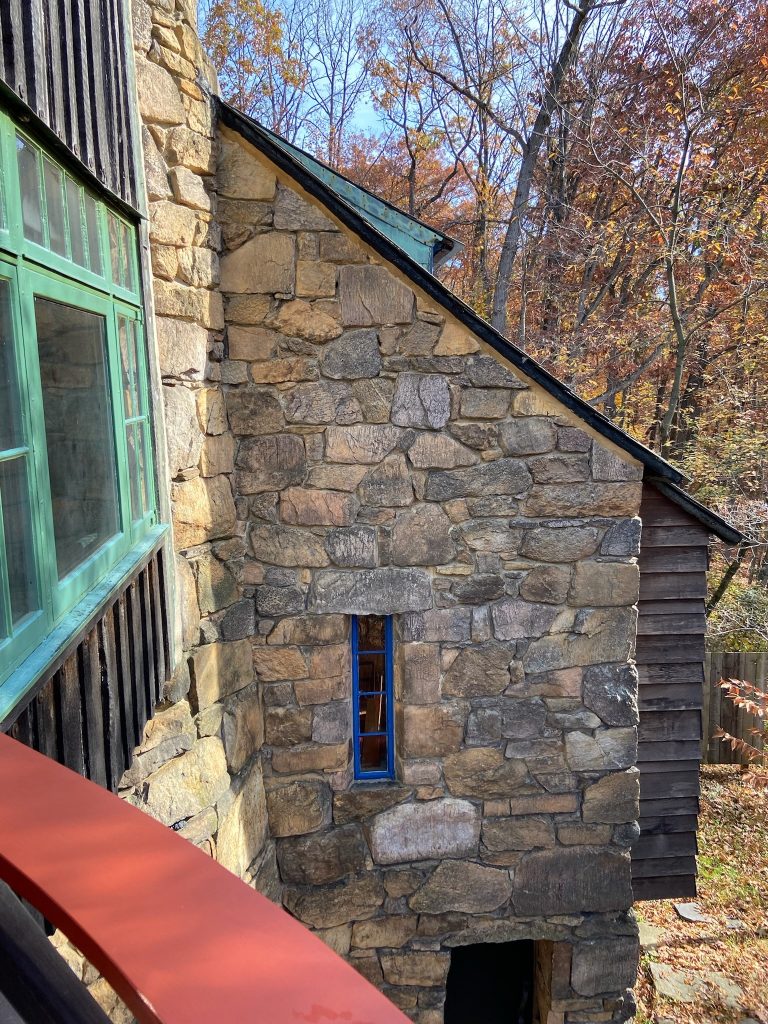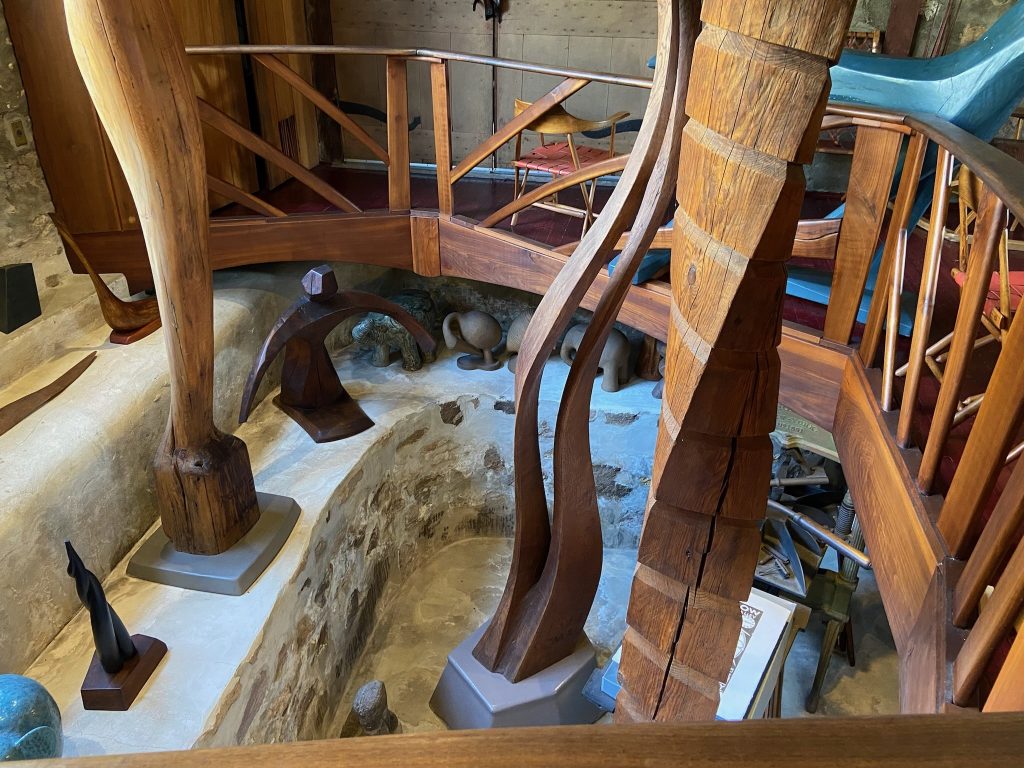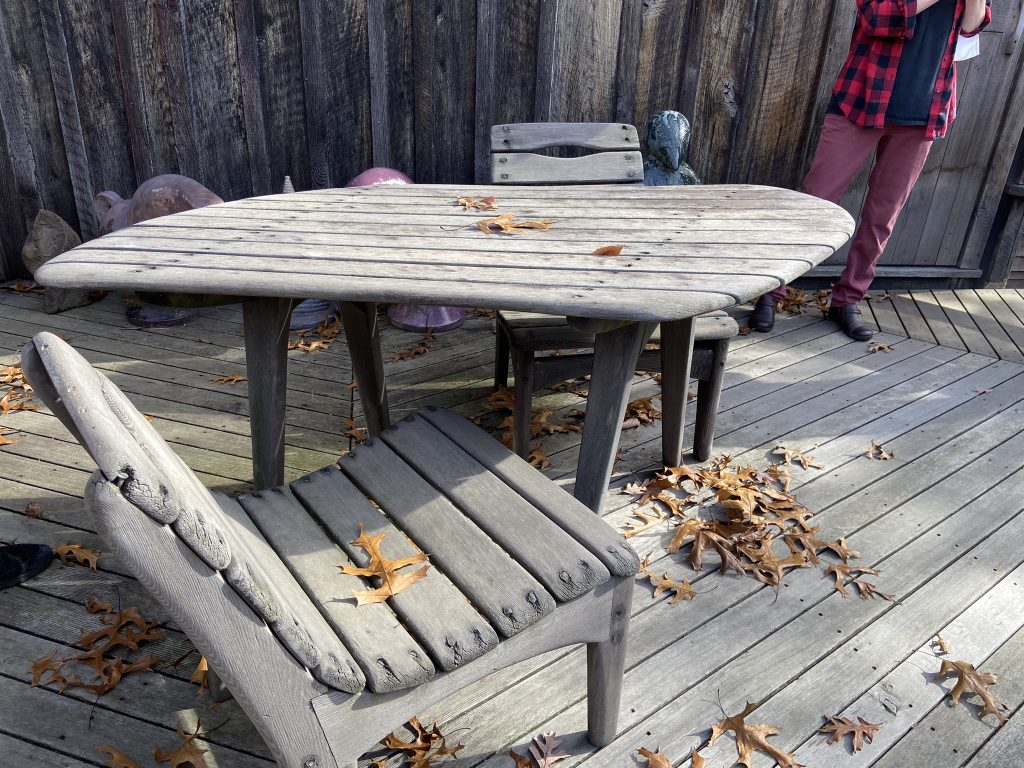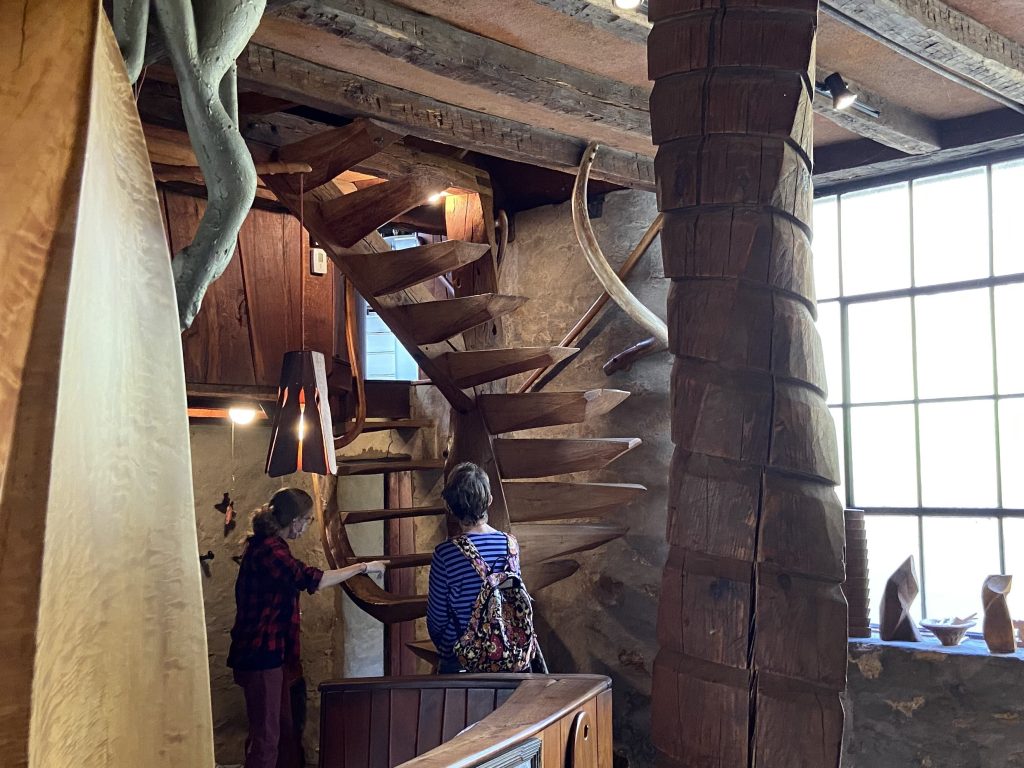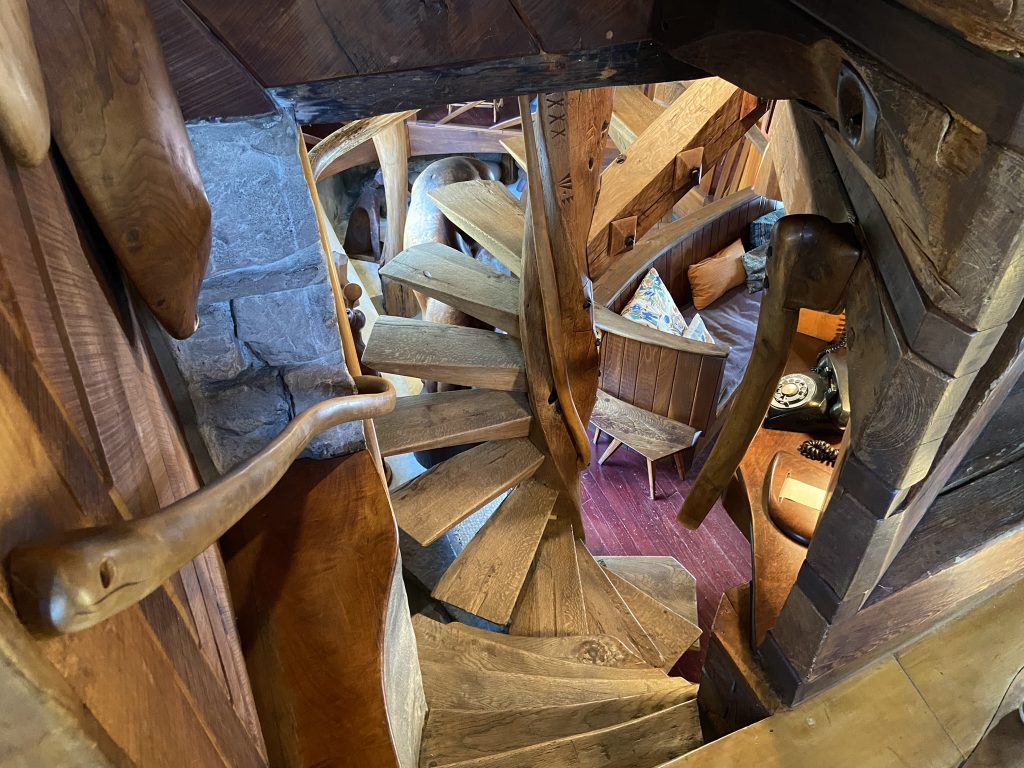An artist’s studio is a place to produce creative work, but artist and woodworker Wharton Esherick (1887–1970) went further. The studio Esherick crafted over four decades, much of it by hand, is recognized as one of his greatest masterworks, embodying his vision for life and art in everything from desks to hand-carved kitchen implements. Founded in 1972 in Malvern, Pennsylvania, 25 miles west of Philadelphia, the Wharton Esherick Museum (WEM) preserves the studio and legacy of the artist, known for sculptural furniture and furnishings that influenced modern design. Besides private commissions, Esherick’s work can be found in more than 20 major American museums. WEM, a member of Historic Artists’ Homes and Studios, offers tours of the studio, whose compact spaces overflow with his creations.
During 2022, WEM has celebrated its 50th anniversary with programs and exhibits exploring the idea of home as a setting for Esherick’s work and a place that inspired artists who visited it. On December 16, the Peabody Award–winning PBS series Craft in America will premiere “Home,” an episode that includes Esherick’s studio-home (viewable on demand now; WEM is at the 32-minute mark) as one example of meaningful artist-created environments. At the museum through December, “Home as Stage” presents art by four contemporary Philadelphia artists who interacted with the studio and produced new works in fiber, metal, and wood. The museum is open for in-person visits through December before its annual January and February closing; tour tickets should be reserved in advance.
WEM is looking forward to enhancing accessibility, growing its program offerings, and using a larger part of its wooded 12-acre campus to present more of Esherick’s work and life story and to engage a wider audience (annual visitation is about 5,400). For now, only the studio and the 150-square-foot visitor center are available for exhibitions. In 2014, though, WEM purchased Sunekrest, the 19th-century farmhouse that Esherick and his wife, Leticia Nofer, bought as a residence in 1913. The museum wants to utilize that space, create a new visitor center, and also open Esherick’s 1956 workshop. A master facilities plan for the expanded museum campus and a capital campaign are in planning stages. A huge boost for WEM came in late 2020 with a $10 million endowment gift from the Windgate Foundation, a supporter of American art and crafts.
Wharton Esherick and the Founding of the Museum
Born in Philadelphia, Esherick studied painting at the Pennsylvania Academy of the Fine Arts but left to follow his own vision. Moving to a farmhouse outside the city with his wife in 1913, he painted and started carving frames for his art to save money. By the 1920s he was creating woodblock prints (some for book illustrations) and then making sculptures in wood; furniture followed, as Esherick’s fascination with wood grew. His style evolved over the years from Arts and Crafts influences to a harder-edged Expressionist style to the fluid, sinuous lines his furnishings are most known for, as Esherick let the features of his materials dictate the form. He had prominent commissions for his modern furniture and interior designs in the 1930s, was featured in shows at the Whitney Museum in New York in the 1920s and 1930s, and had a room in the “America at Home” pavilion of the 1939 World’s Fair with pieces that were efficient and beautiful. He did not license his furnishings for mass production and did not market his work. Part of Esherick’s legacy is his influence on the studio furniture movement, which began in the 1940s and turned from mass-produced furniture to limited-production objects built by craftspeople in studios.
Esherick started work on his hillside studio in 1926, adding to it several times to accommodate living quarters after he separated from his wife. He built a garage, currently the visitor center, in 1928. In 1956, needing more space and also needing proper permits, he collaborated with his friend, noted architect Louis I. Kahn, on the workshop, which combines elements of the geometry Kahn favored with the organic forms Esherick preferred. These buildings allowed Esherick to express himself fully and also to entertain his many friends, including artists and writers.
Toward the end of Esherick’s life, he faced challenges maintaining the property, and his daughter Ruth Bascom Esherick (1922–2015) and son-in-law Mansfield (Bob) Bascom (1924–2020) purchased the site. Their intention was to eventually open the site to the public, which happened in 1972, two years after Esherick’s death. The couple moved into the workshop on the property and devoted themselves to the museum for decades. In 1973, the studio was added to the National Register of Historic Places, and in 1993, the Wharton Esherick Museum was designated a National Historic Landmark for Architecture.
Exploring the WEM
Visitors immediately notice the nontraditional qualities of the museum’s Esherick-designed buildings: the green-and-yellow-sided, log cabin-look visitor center (the 1928 garage) with its sloping, curving roof, and the blue 1956 workshop with corners resembling dovetail joints. The studio itself has distinct sections including the barn-like 1926 section with its stone walls and curved roof; a taller wooden addition; and the concrete tower known as the “silo,” with its colorful frescoed surface, built in 1966.
The engaging 60- to 75-minute guided tour of the studio (8 people maximum; a 90-minute campus tour at select times offers additional access) is an intimate experience of vibrant, small-scale spaces packed with Esherick’s sculptures, models for works, furniture, and woodblock prints. More than 300 pieces of art fill a space with few straight lines. Since the rooms contain pieces from different decades, visitors learn about the artist’s style and the people Esherick worked with to produce his furniture. Details include how the glowing wood is finished (with boiled linseed oil) and how Esherick obsessively used every wood scrap, wasting nothing. Besides striking features like the iconic spiral wooden staircase, there are items like wooden switch plates by Esherick. Each room has its charm: the kitchen, with its curved surfaces and cabinets, resembles a ship’s galley in its efficient use of space. The bedroom has a treehouse-like bed under the eaves, with storage below holding Esherick’s neatly folded clothes, and bookshelves and a cabinet with ample storage. All in all, the studio with its organically connected sections reflects a life of constant, passionate creativity that can inspire those who visit.
Connections and Community
Part of the museum’s mission is to connect people, whether the general public, craftspeople, or artists, to Esherick’s work through programs and community partnerships. Each year WEM offers a special exhibition focusing on works in its collection and an exhibition in which contemporary artists present work in the visitor center and studio (“Home as Stage” is the current one). Because the museum’s physical space is limited, its website has information and videos to enhance the experience. Many programs, focusing on aspects of the collection or on other creatives, are available on YouTube. The website also has resources for adult and younger learners, including a documentary about Esherick.
Two special annual competitions support today’s makers. Since 1994, the museum’s prestigious Annual Juried Woodworking Exhibition has recognized new designs, from established and emerging makers, that utilize wood. Some works are shown in the visitor center; others are online. Many are available for sale. Printmaking led Esherick to his work in wood, and the annual Imprint Competition & Exhibition features talented high-school printmakers from Philadelphia and surrounding counties in an online exhibition.
Linda Cabasin is a travel editor and writer who covered the globe at Fodor’s before taking up the freelance life. She’s a contributing editor at Fathom. Follow her on Instagram and Twitter at @lcabasin.

